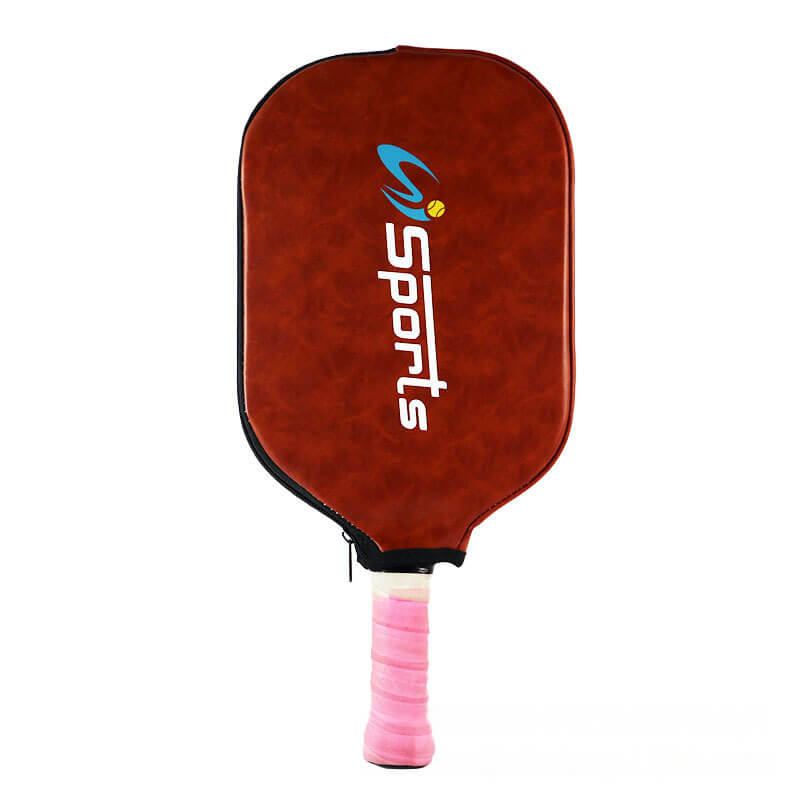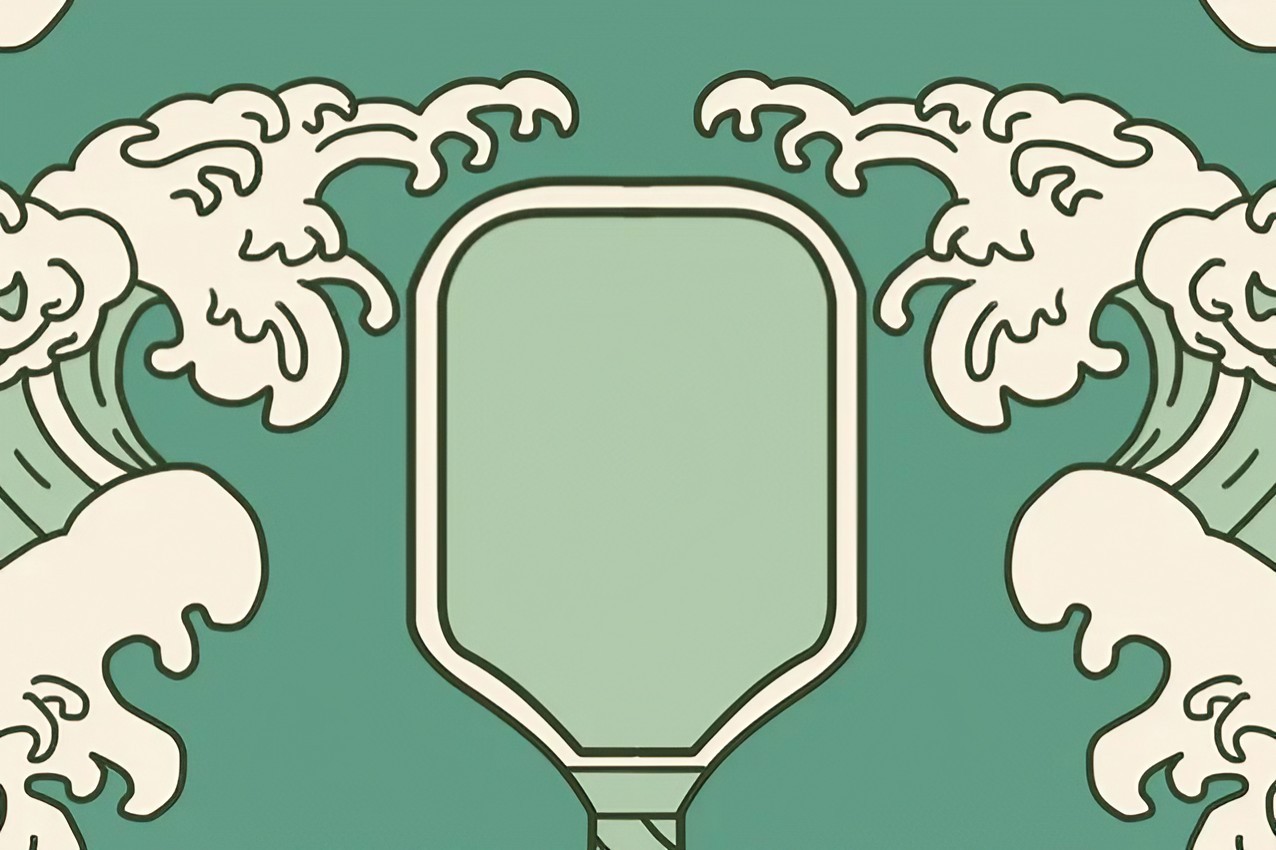Picture this: You’re deep into an exciting pickleball match when the sky suddenly opens up. Your paddle? It’s now drenched. What do you do next?
If pickleball paddles get wet, it can potentially damage the honeycomb core, weaken adhesive bonds, and cause warping. To minimize damage, promptly dry the paddle with a towel and store it in a dry environment away from moisture.
But don’t panic just yet! While getting your paddle wet isn’t ideal, there are effective strategies you can adopt to keep it in top shape. Let’s dive into the details!
Wet pickleball paddles can warp if not dried properly.True
Moisture can cause the paddle's materials to expand, leading to warping.
How Does Moisture Affect Different Paddle Materials?
Moisture can significantly impact the performance and lifespan of your pickleball paddle, depending on the materials used in its construction.
Moisture affects paddle materials differently: wood may swell, composite materials can delaminate, and polymer cores might warp. Proper care and storage are essential to mitigate these effects.

Understanding Paddle Materials
Pickleball paddles are typically made from various materials such as wood, composite, and graphite, each reacting uniquely to moisture exposure. Understanding these differences is key to ensuring your paddle lasts1.
Wood Paddles
Wood paddles are often the most susceptible to moisture. When exposed to water, wood can swell, causing the paddle to become heavier and unbalanced. This swelling may lead to cracks or splinters over time, which can severely impact your game.
| Effect of Moisture | Action Required |
|---|---|
| Swelling | Dry thoroughly |
| Cracking | Use wood sealant |
Composite Paddles
Composite paddles combine materials like fiberglass and resin. These paddles are lightweight and durable but can delaminate if moisture penetrates the surface. Delamination weakens the paddle’s structure, affecting both its performance and longevity.
Preventive Measures:
- Immediate Drying: Wipe down after exposure.
- Regular Checks: Look for signs of separation or bubbling.
Graphite Paddles
Graphite paddles feature a layer of carbon fiber that provides excellent strength and control. However, moisture can cause adhesive bonds between layers to weaken, especially if the paddle is not dried properly. Over time, this can lead to structural issues that might compromise your gameplay.
Caring Tips:
- Store in a cool, dry place.
- Avoid prolonged exposure to water.
Polymer Core Impact
The core of many modern paddles is made from polymer honeycomb, which can absorb moisture and expand, resulting in warping or even breaking under pressure. Ensuring the core remains dry is crucial for maintaining a consistent hit.
Explore how polymer cores react to water2 to better understand their vulnerabilities and care needs.
By taking these factors into account, you can effectively manage how moisture interacts with your pickleball paddle, prolonging its useful life while maintaining optimal performance.
Wood paddles swell when exposed to moisture.True
Moisture causes wood to absorb water, leading to swelling and imbalance.
Graphite paddles are unaffected by moisture.False
Moisture weakens adhesive bonds in graphite paddles, affecting structure.
What Are the Long-Term Effects of Water Exposure on Paddles?
Understanding how prolonged water exposure affects your pickleball paddle is key to preserving its integrity and playability.
Long-term exposure to water can lead to paddle core degradation, adhesive breakdown, and permanent warping, reducing its lifespan.

Understanding Paddle Core Degradation
Most pickleball paddles have a honeycomb core made from materials like polymer, aluminum, or nomex. These materials are lightweight and provide the perfect blend of power and control. However, when exposed to moisture over extended periods, the structure of these cores can become compromised. Water seeping into the core can lead to swelling and softening, which may ultimately reduce the paddle’s responsiveness and durability.
To visualize, think of a sponge. When dry, it’s firm and easy to handle. But when soaked, it becomes heavy and loses its shape. This analogy underscores how critical it is to prevent water from penetrating3 the paddle core.
The Impact of Adhesive Breakdown
Adhesives play a crucial role in binding the layers of the paddle together. Continuous exposure to water can degrade these adhesives, leading to delamination—a condition where the layers begin to separate. Delamination not only affects performance but can also pose a safety risk during play.
To counter this, ensure you examine your paddle regularly for any signs of separation or unusual noises that might indicate adhesive issues. Early detection can save you from more costly repairs or replacements down the line.
Warping: A Structural Concern
Warping occurs when materials are subjected to stress, like moisture, causing them to bend or twist out of shape. A warped paddle may not make consistent contact with the ball, resulting in reduced accuracy and control. Additionally, warping can permanently alter the paddle’s shape, making it unsuitable for play.
Preventing warping involves not only drying your paddle thoroughly after each use but also storing it properly. Avoid leaving it in damp places or exposing it to direct sunlight for prolonged periods.
Conclusion: Maintaining Your Paddle’s Lifespan
While all paddles are susceptible to water damage over time, taking preventive measures can significantly extend their lifespan. Regular checks for core integrity, adhesive strength, and structural soundness are essential practices for any pickleball enthusiast.
Water exposure can cause paddle core degradation.True
Moisture compromises honeycomb cores, reducing paddle responsiveness.
Regular drying prevents paddle adhesive breakdown.True
Drying stops moisture from degrading adhesives, preventing delamination.
How Can You Properly Dry and Store Your Paddle?
Proper care for your pickleball paddle starts with effective drying and smart storage techniques.
To properly dry and store your paddle, gently towel dry it immediately after it gets wet, ensuring all crevices are moisture-free. Store it in a cool, dry place, away from direct sunlight and damp environments, to prevent warping and material degradation.

Immediate Drying Techniques
When your pickleball paddle gets wet, immediate action is key. Use a soft towel or cloth to gently wipe down the paddle. Pay special attention to the edges and any grooves where water might accumulate. Avoid using heat sources like hairdryers as they can damage the material integrity.
Storing Your Paddle Safely
Proper storage is essential for maintaining your paddle’s condition. Keep your paddle in a cool, dry place, such as a closet or a dedicated sports equipment bag. Avoid leaving it in garages or basements where humidity levels are typically higher.
Protecting Against Sun Damage
UV light can be detrimental to certain paddle materials. Always keep your paddle out of direct sunlight for prolonged periods. Consider using a paddle cover or case for additional protection against both sun and moisture.
Regular Inspections
Regularly inspect your paddle for signs of wear and tear. Look for indications of delamination or warping, as these can affect performance and safety. Addressing these issues early can help prolong the life of your paddle.
For more details on specific storage environments, see our section on keeping sports gear in optimal condition4. Additionally, our guide on choosing the right paddle material5 offers insights into how different materials respond to moisture and sun exposure.
Using a hairdryer is safe for drying paddles.False
Hairdryers can damage the paddle's material integrity.
Sunlight exposure can harm pickleball paddles.True
UV light can cause material degradation in paddles.
What Precautions Should You Take During Wet Conditions?
Wet conditions can pose a significant risk to your pickleball paddle, affecting its performance and longevity.
To protect your paddle during wet conditions, ensure quick drying, proper storage, and avoid prolonged exposure to moisture. Utilize protective gear, and regularly inspect your paddle for damage.

Keep Your Paddle Dry
When playing pickleball in wet conditions, it is crucial to keep your paddle as dry as possible. Water can seep into the honeycomb core of many paddles, leading to potential warping or weakening of the adhesive bonds.
- Use a Towel or Cloth: Always have a towel or absorbent cloth handy to wipe down your paddle during breaks in play.
- Protective Covers: Consider using protective covers that can shield your paddle from rain or moisture when not in use.
Avoid Prolonged Exposure
Leaving your paddle exposed to wet conditions can cause long-term damage. Even when not playing, take steps to ensure your paddle is protected.
- Store Properly: After play, store your paddle in a dry location. Avoid leaving it in damp environments like garages or basements.
- Check the Weather: If rain is expected, consider indoor play or reschedule your game to prevent unnecessary exposure.
Regular Inspections
Consistent checks can help identify early signs of damage caused by moisture.
- Inspect for Delamination: Look for any signs of the layers separating on the paddle surface, which can indicate water damage.
- Check the Grip: Moisture can also affect the grip of your paddle. Make sure it remains firm and secure.
Utilize Protective Gear
Investing in quality gear can offer additional protection for your paddle.
- Waterproof Bags: Use a waterproof bag or case to transport your paddle. This prevents unexpected rain or spills from reaching it.
- Umbrellas or Canopies: During outdoor play, setting up an umbrella or canopy can offer immediate protection against sudden weather changes.
By adhering to these precautions, you can significantly extend the lifespan of your pickleball paddle even when playing in wet conditions. Explore more about how water affects different materials6 and ways to safeguard your equipment.
Moisture can warp pickleball paddle cores.True
Water seeping into the honeycomb core can cause warping.
Storing paddles in basements is recommended for dryness.False
Basements are typically damp and not suitable for paddle storage.
Conclusion
Taking proper care of your paddle can significantly extend its lifespan. By following these tips, you can ensure optimal performance and protect your investment for countless matches ahead.
-
Learn effective strategies for prolonging your paddle’s lifespan.: To preserve the textured paddle surface, use a damp microfiber cloth for cleaning pickleball paddles. Avoid household cleaners as they can leave a sticky … ↩
-
Discover how water impacts polymer cores and best care practices.: Focusing on the PIM 60%AlqCl–40%CTA, a reduction of 40% of chlorine was found when compared with the dry sample. The reduction of S for PIM 60%AlqSCN–40%CTA was … ↩
-
Explore detailed effects of water on honeycomb structures.: Hot and wet conditions degrade the structure significantly, but it recovers some of the strength when it dries. Fogarty [16] reported a different result, where … ↩
-
Learn how to store sports gear effectively to prolong its lifespan.: Clean them thoroughly and let them air dry. Store in mesh bags or open containers to allow airflow. Avoid places with extreme temperatures. 9. ↩
-
Understand how various paddle materials handle exposure to moisture.: The Core of the Matter: Paddle Materials Pickleball paddles are crafted from various materials, including wood, graphite, and composite. ↩
-
Learn how moisture impacts various paddle materials to prevent damage effectively.: In conclusion, pickleball paddles can get wet, but it’s important to protect them from moisture as much as possible. Using a paddle cover, … ↩






